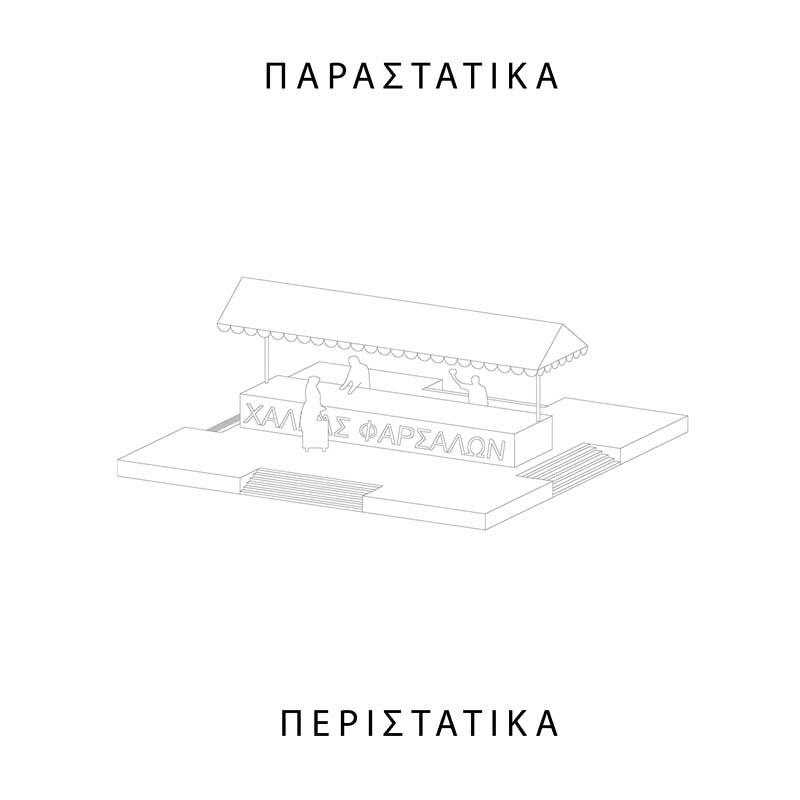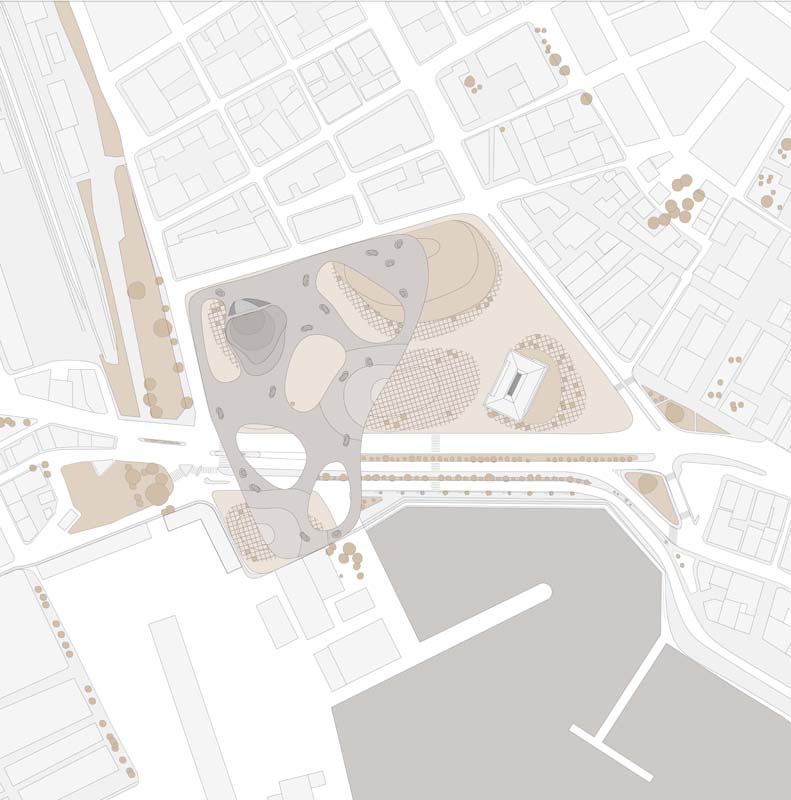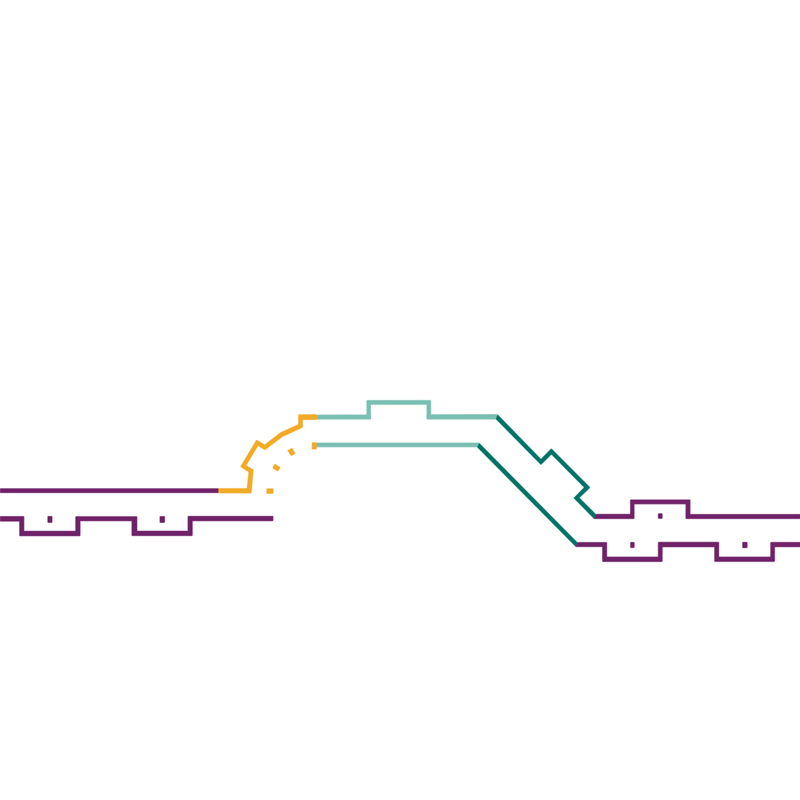

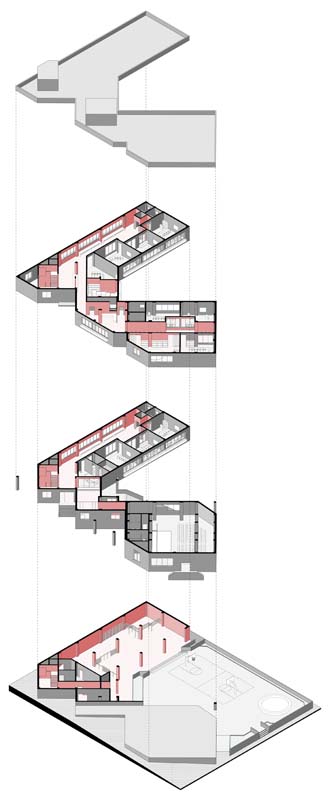

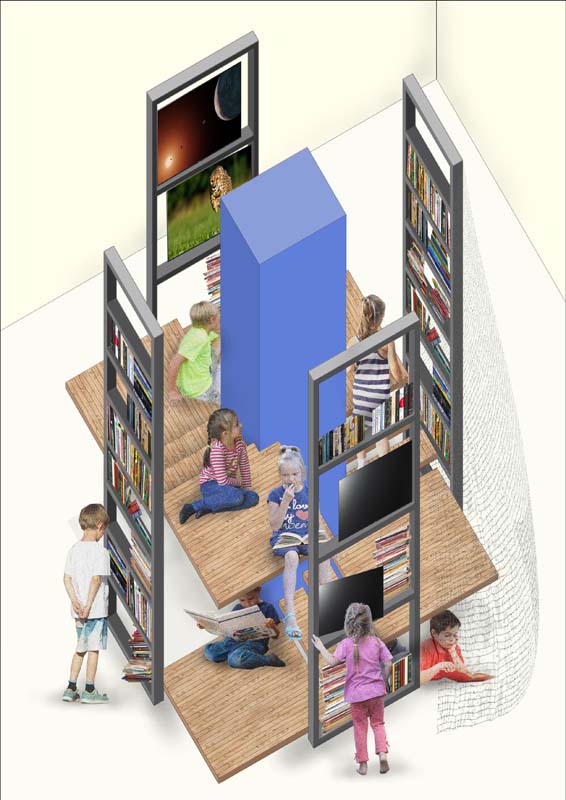

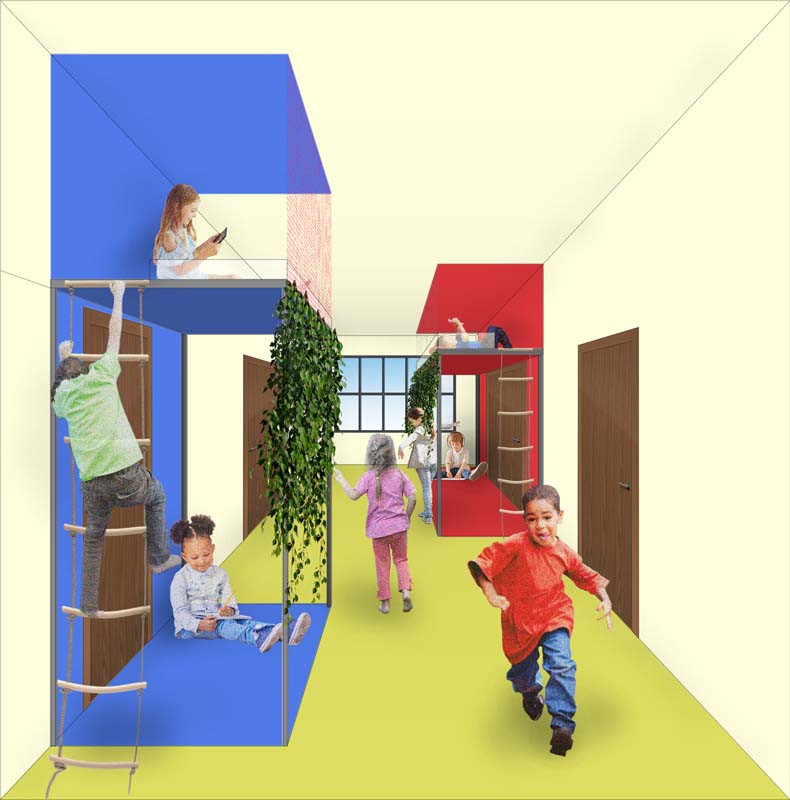



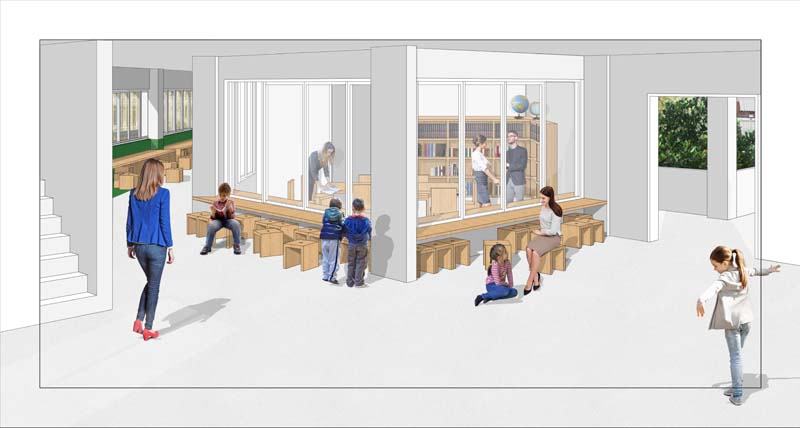

Is it possible for a school building to transform into a wholistic learning experience? The present paper constitutes an attempt to enhance both the educational role (communication of knowledge) and pedagogical character of school buildings through a series of interventions made from the perspective of the spatial distribution of learning. This project concerns existing school buildings (primary schools) in which the interventions proposed are applicable. The school buildings of the Greek city of Kalamata constitute the starting point for the present study of primary school buildings.
In the first part of the dissertation, a research is conducted in three stages. At first, the city is studied in terms of its spaces and their uses with emphasis placed on the educational ones. Then, the focus is placed on school buildings. Schools are divided into five categories based on their common features to make it easier to deal with their large number. Finally, we turn to the people who move and live in these places, that is the students and teachers, through the method of questionnaires. The purpose of this project is to project reality in schools on a wholistic level that will constitute the basis for the designs proposed.
In the second part of the paper, a list of interventions is created. The interventions made are distinguished into three categories that have to do with the structure of the school building, its operation and more specifically that of the classroom as well as the building’s equipment. In the end, we examine the application of these interventions in four school paradigms. This approach in its entirety has as its aim the expansion of both the field of studies and the range of stimuli and experiences students will have in a school building.
Supervisor: Lykourioti Iris
Reference Number: 711
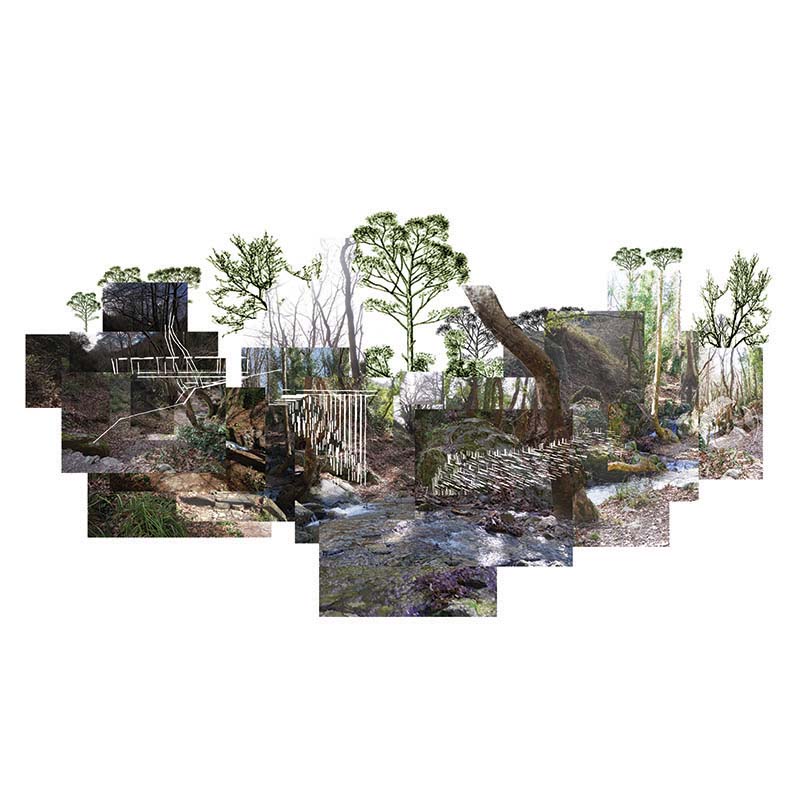

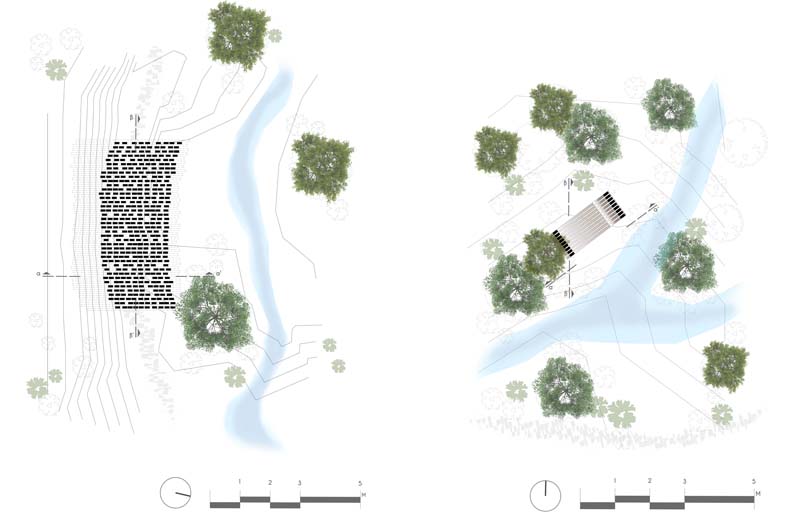

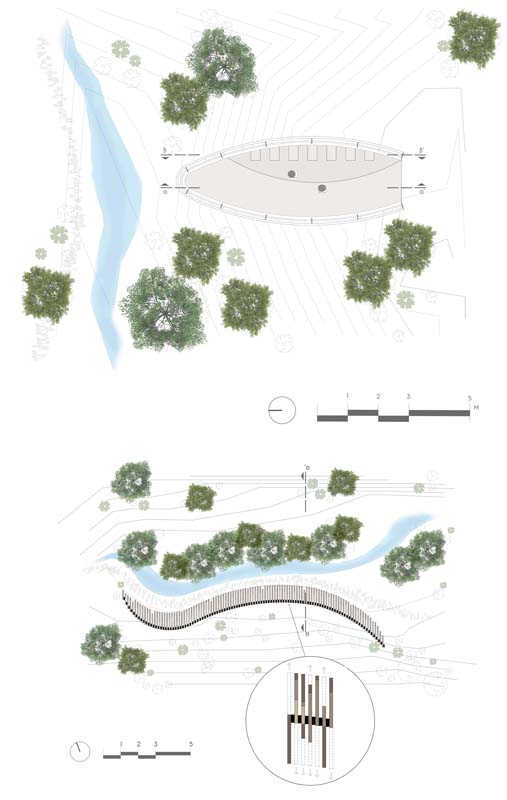

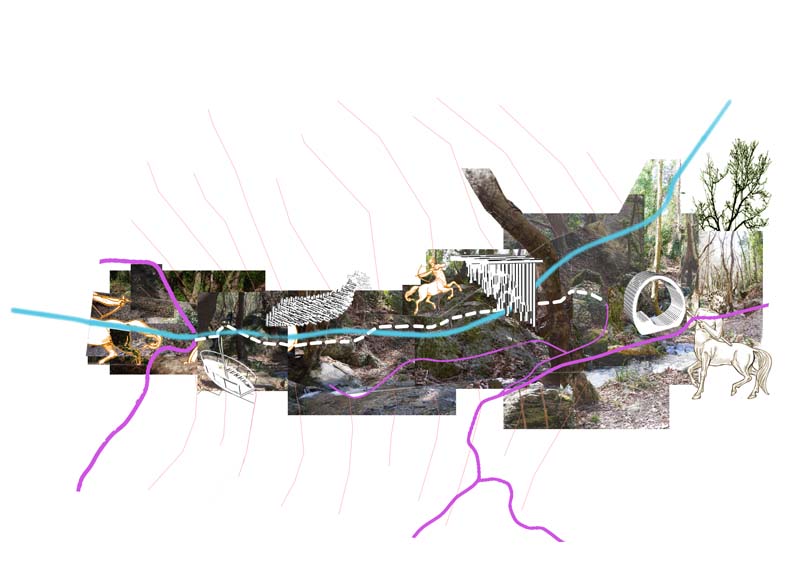

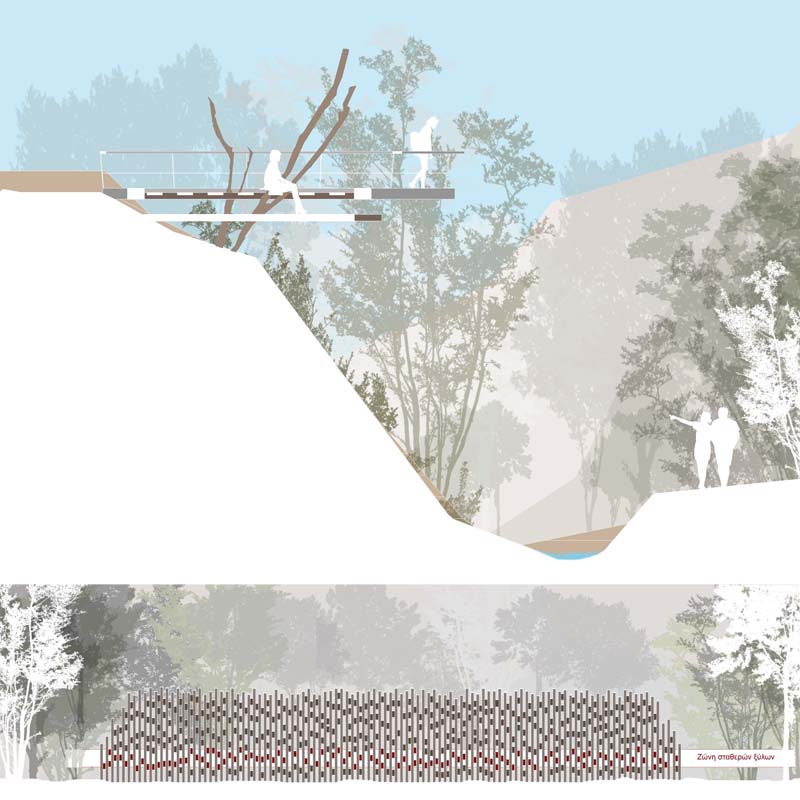

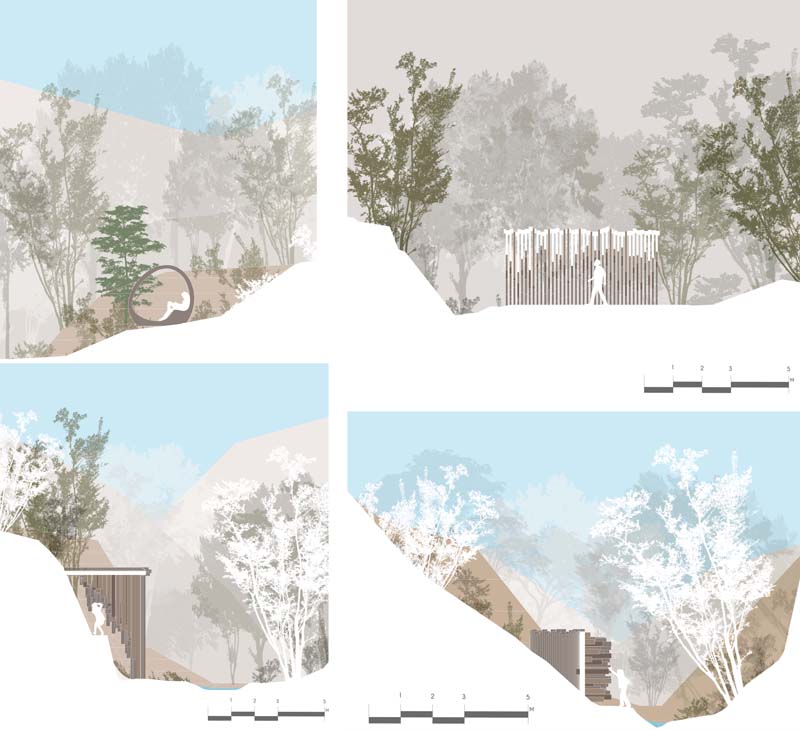

Thousands of years ago, people’s need to interpret how the world was created along with the earth, the sky, the sea or the universe and the need too explain the natural phenomena led to the formationof mythology. The course of this thesis’ dissertation starts with the interest that Pelio presents which could not be missed from the magical world by the Greek mythology. With target the imprint of the senses which provoke the four basic myths of the region, four constructions were created along the path of centaurs in Portaria.
The path in its total distance is half a kilometer and it is chosen because of its location and fairy-tale morphology.
After continuous visits and study, the precise points that are suitable for the constructions - interventions were finalized in order to structure in cooperation with the path, a kind of an unconventional museum. Therefore, a few meters from the beginning of the pathwalk, one will meet Argo - a construction based on the Argonautical expedition which was organized and set out from Pelio with Jason as captain. The construction uplifted from the walking level with simultaneous view of the Pagasetic gulf as well as the path.
Down the road, Thetis is placed on an idyllic spot right next to the water as it is suitted to a nereid. It is a contruction consisted of perpendicular and horizontal woods with the horizontal ones being movable, therefore, allowing both the game and the relaxation as it transforms into a seat. The continuous movement works as a reminder of the transfigurations of the nereid in order to get away from Pelias.
Centaurs are next with the emphasis placed on the element of danger, as they were known being violent creatures representing the negative aspect of nature. At the point where the path becomes quite narrow, a wooden structure is placed above the walkers head, limiting even more the passage through.
At the end of the walk, where the surroundings are obviously tranquil, Chiron is placed. This is a structure in a form of a seat that reminds us of the cave of a special centaur - that of a healer - Chiron.
Supervisor: Trova Vasso
Reference Number: 693
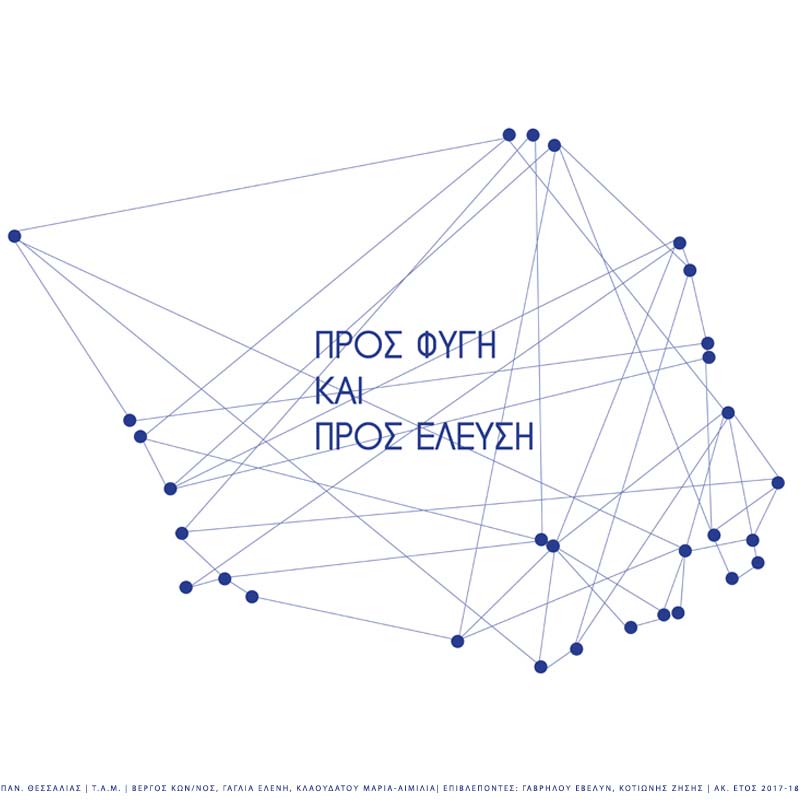

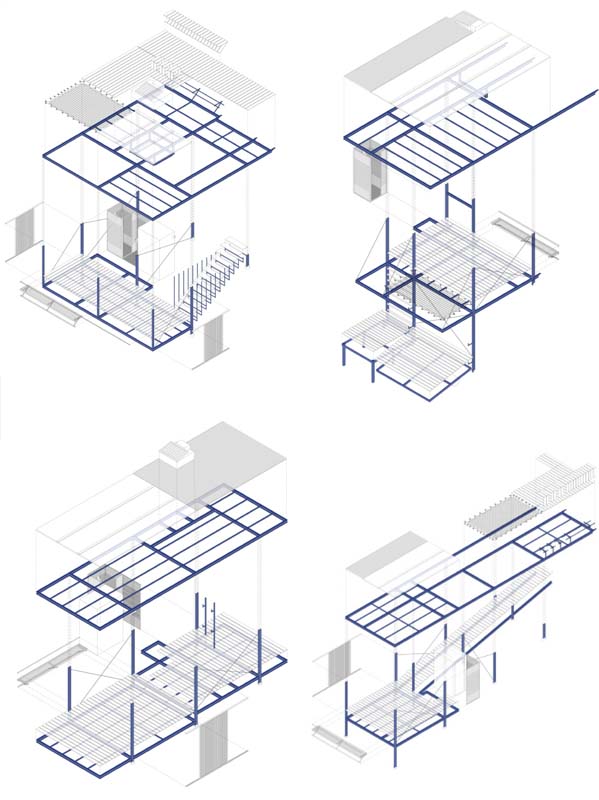

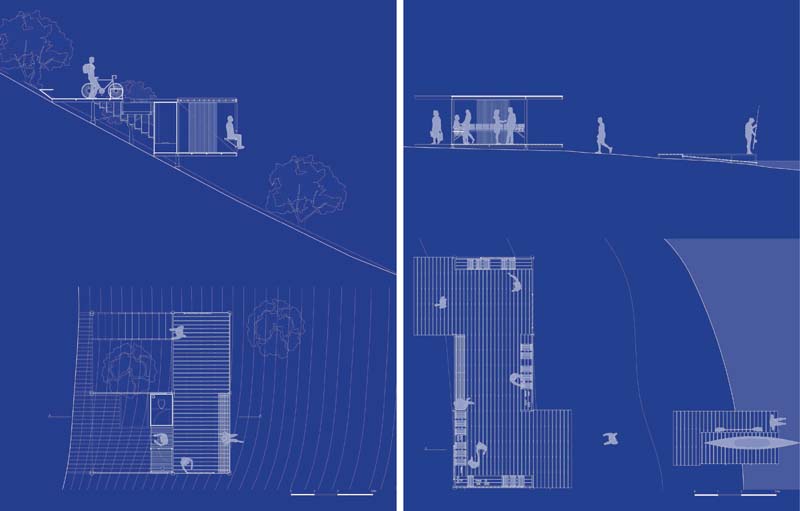

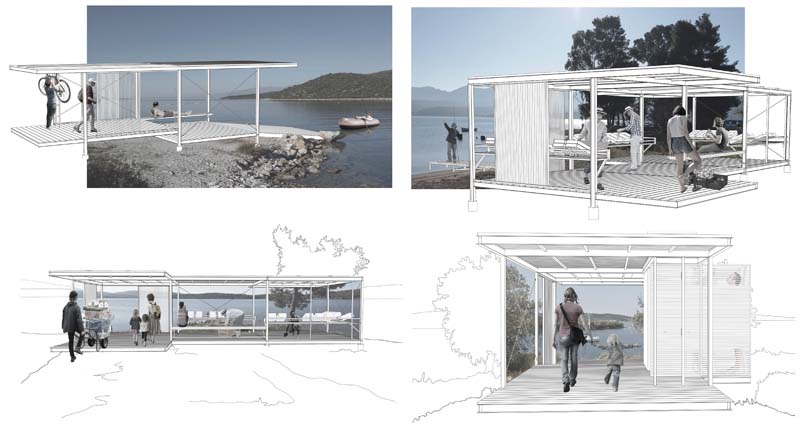

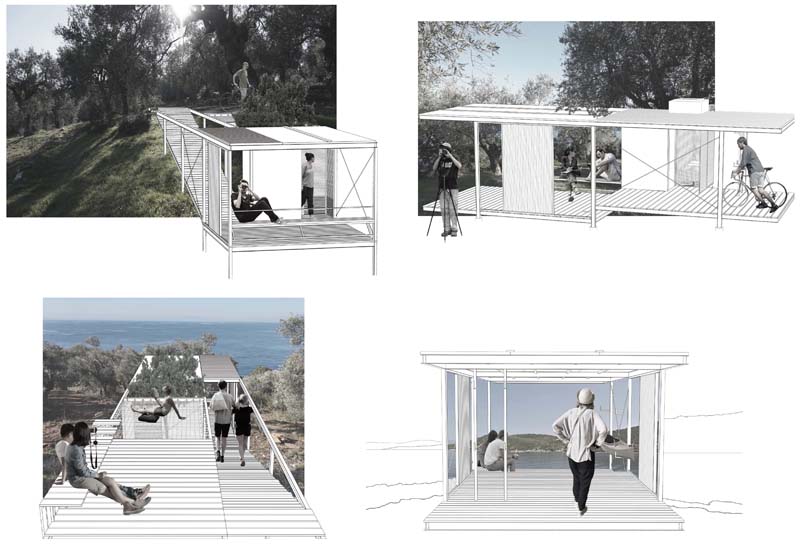



With an interest in the quality of the landscape, the connection with the sea and the life by the seathat we recognize as basic elements of the greek lifestyle, we propose a simple way of living it and exploring it. Our vision is to create a vivid network in the Pagasetic Gulfwith possibilities of expansion, in the context of which different subjects will interact and activities will be combined.We chose the Pagasetic Gulf and the area of Pelion in general to start our network, as it concentrates all the qualities and elements that we are interested in. Ιt is an area that combines rich natural resources, variety of landscapes and activities, wealth of history and traditions, combination of sea, road and path networks, direct connection with the sea and by-the-sea living.
Supporting the idea of a network, we propose the construction of small shelters along the coastline. Those infrastructures will provide shelter to hikers, bikers, paddlers, climbers and everyone else who loves the nature and the outdoor activities and visit the place in order to get in touch with the local people, the traditions, the lifestyle, the local products, not in touristic terms but through pleasure and physical experience.The selection of the spots that we propose is based on the survey that we conducted in the area and the information that we selected about the available activities, events and other networks around Pagasetic. So we put the shelters in spots where they can serve different subjects and activities. The shelters that we propose are minimal, simple and ephemeral, accessible from both the land and the sea and easy to construct and disassemble. We want the shelters to become part of the landscape without burdening it. The structures follow every landscape and adapts to it, offering beautiful views. The idea is to build some of them at the beginning and gradually, based on the needs and the feedback that we will get through our platform by the users, to expand the network.
Supervisors: Gavrilou Evelyn, Kotionis Zissis
Reference Number: 662
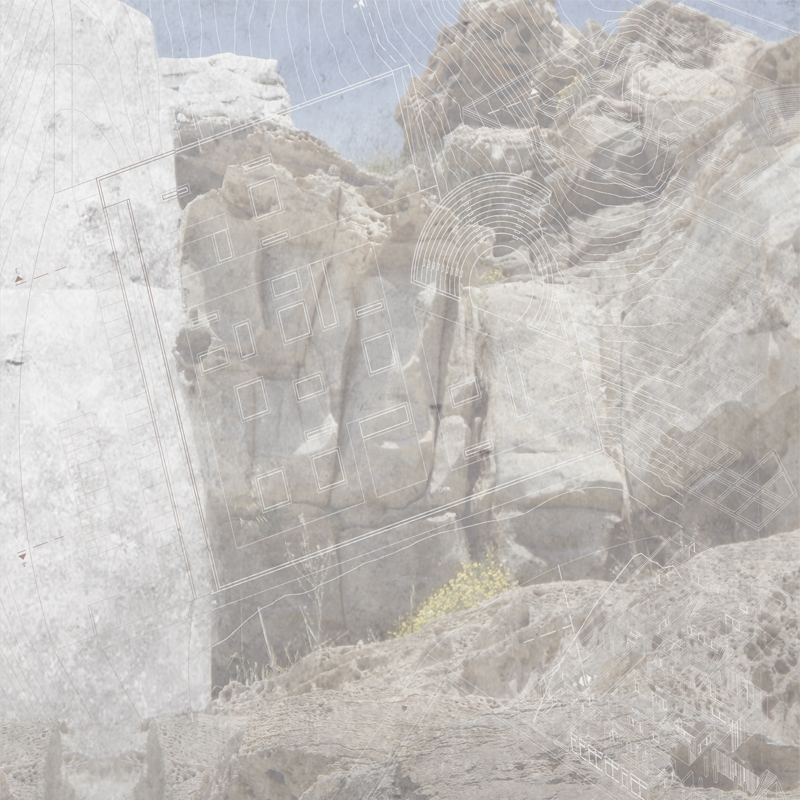



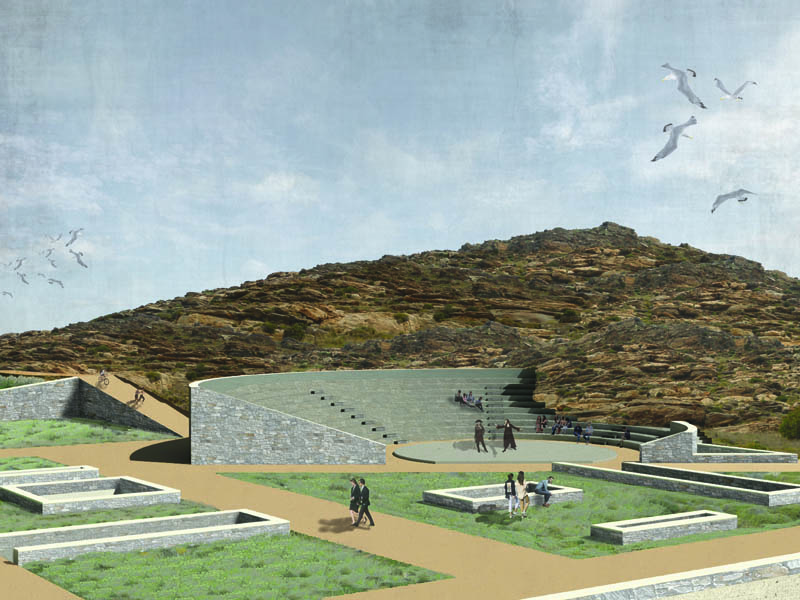

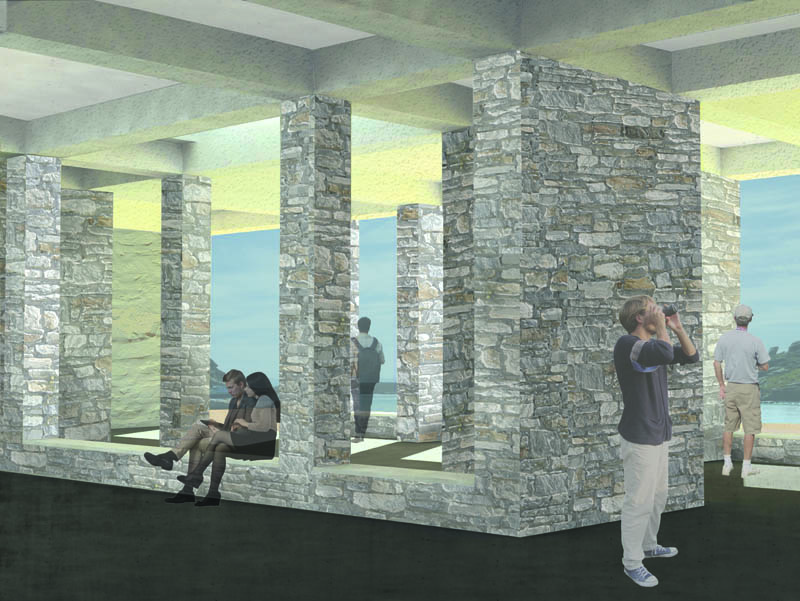

This Diploma Thesis deals with the design of a Cultural, Educational and Leisure Complex in the area of Ai - Yiannis Detis on the island of Paros, which is the favorite place of the student. The lack of a hyperlocal Cultural Center on the island and the need to highlight the important cultural activity of the Parians, led to the idea of redesigning the "core" of the infrastructures of Paros Environmental and Cultural Park in the peculiar natural beauty and history peninsula of Ai - Yiannis Detis. The intention is to create there a modern complex, which will attempt to "reinforce" the use and "interact" with the dominant existing outdoor infrastructure of the Theater, which is "embedded" in the unique geological landscape - rocks of Ai - Yiannis. Through cultural events, educational activities and recreational uses, such as exhibition space, small Geological Museum, multipurpose hall, educational workshops, refreshment, restaurant etc., it aspires to be a landmark for Paros and a public cultural attraction. A "crowd capacitor" active all year round and for all ages, both for locals and for domestic and foreign visitors. The aim is to promote alternative forms of tourism, such as the modern quality cultural tourism and others. It is a gentle intervention with an attentive scale that respects the environment and is fully integrated into the natural landscape and terrain. The entire Composition is a semi-underground platform that could be considered as a miniature of a Cycladic settlement core, because independent linear building structures are joined under a single fordable and planted slab which has holes and creates passages, open-air, semi-outdoor and closed spaces. It follows the basic synthetic principles of Cycladic architecture with a modern perspective and consists of the rocks of the region that make up the stone-bearing walls, the masonry, the columns and the benches, of reinforced concrete that constitutes the single slab, the beams and the floors, as well as of the excavation products.
Supervisor: Manolidis Kostas
Reference Number: 671
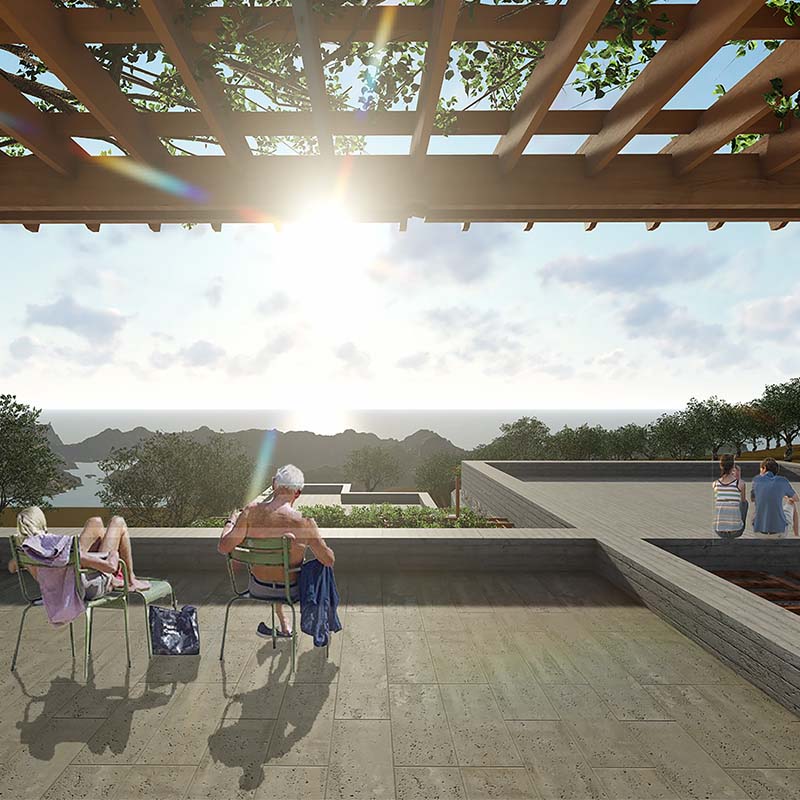



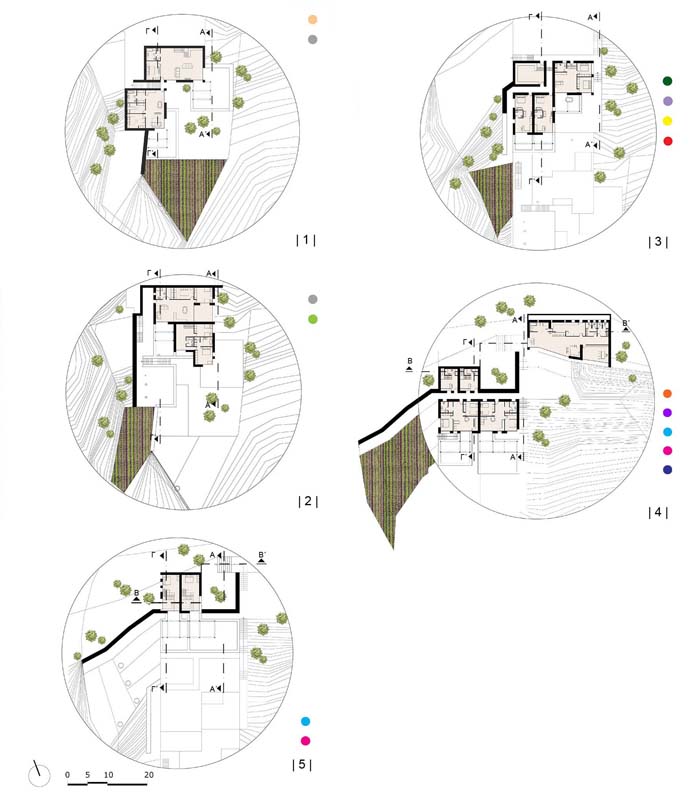

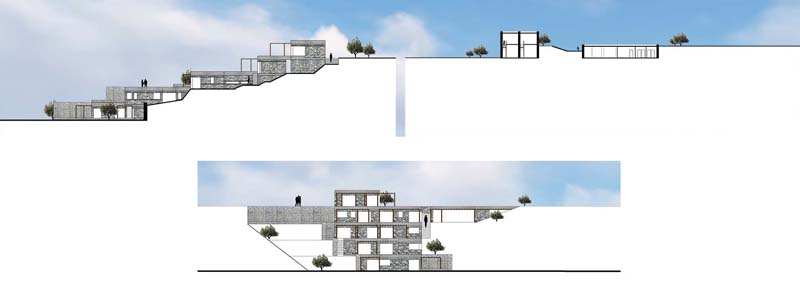

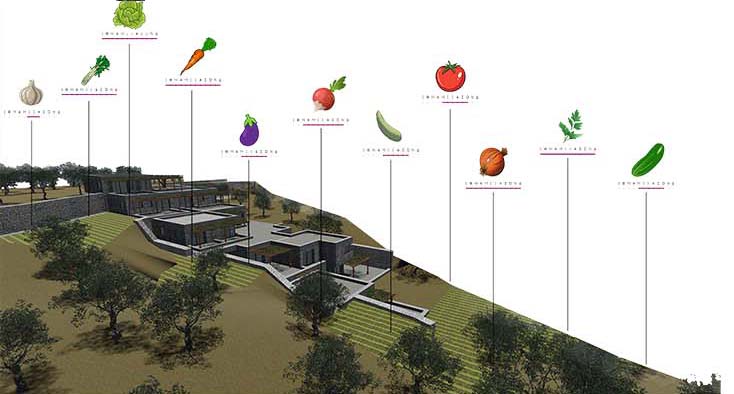



This dissertation examines summer housing in the Greek islands . It focuses on 6 acres of land close to Patitiri of Alonnisos with a strong altitudinal fluctuation of 25 metres.
The key principle applied to this study was the creation of a structure that is in harmony with the environment it is located in. The structure is in the form of bunker, which reveals its form on the slope of Patitiri. Furthermore, a traditional method of masonry was applied to the structure in order to match its natural surroundings. The use of stone from the nearby island of Peristera, in conjunction with elements of concrete and rock fills in gabions, made from the same type of stone in order to withhold the slanted surface, led to the creation of a structure that does not contrast with theterrain it is placed in.
The above resulted in the creation of a public building and ten housing units, each with its own plot of arable land, which bring their inhabitants in direct contact with the environment. Each inhabitant is called upon to produce the vegetables they consume in a harmonious coexistence with the natural environment that surrounds them.This is achieved with the use of rainwater collection tanks, with sufficient capacity to cover the cultivation needs for the entire summer period.
The housing unit complex acts as a refuge for the modern man away from his artificial environment. Through this experience, man comes in contact with the subsoil and arable land, reminding him of his primary role: he is part of nature, not its master. He therefore needs to respect nature and its particularities and coexist harmoniously with it.
Supervisor: Kanarelis Theoklis
Reference Number: 694
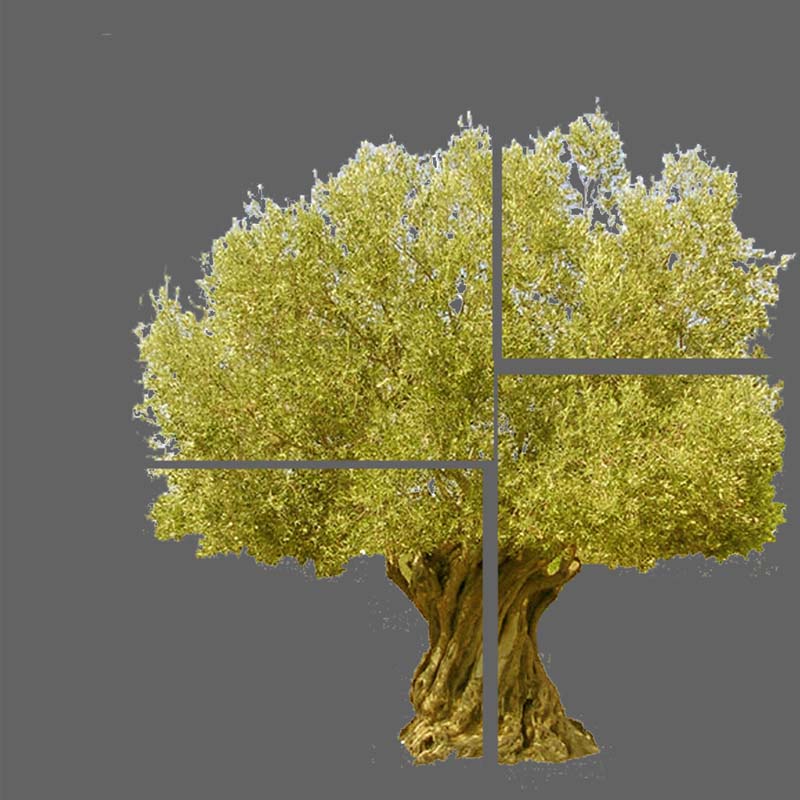

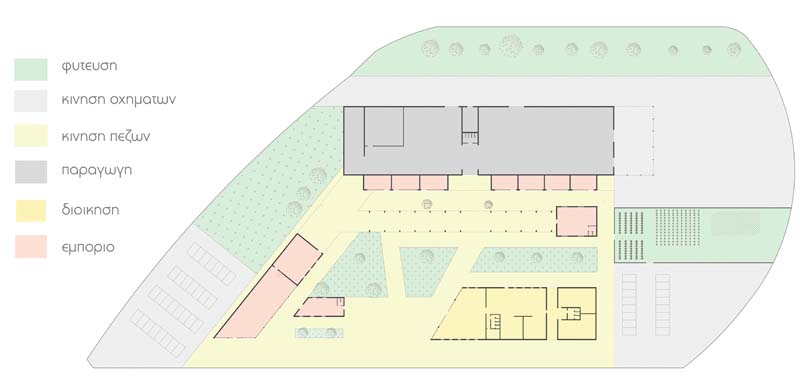



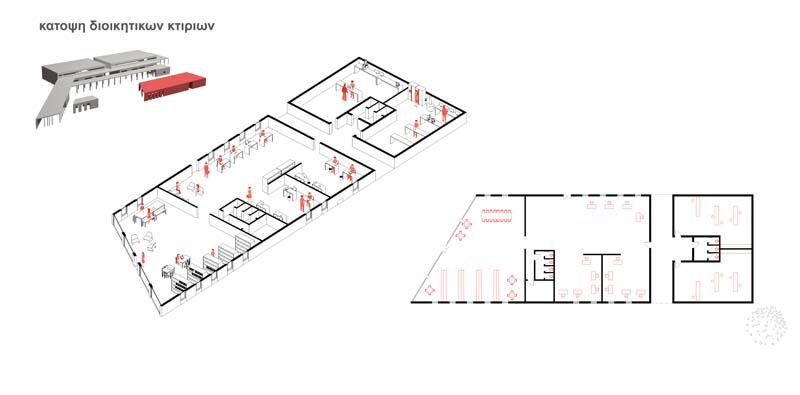

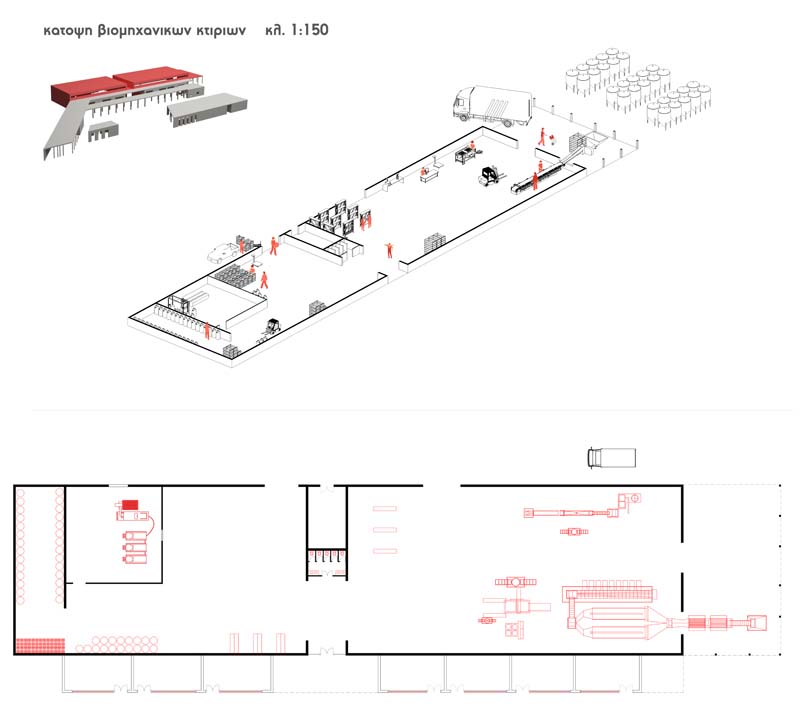

My proposal concerns the design of a cooperative olive grove in the village of Gonni in Larissa. There are several olives in the area but from the research I made I identified several problems in the production and disposal of the product. The aim of this project is to help solve these problems and at the same time propose a different way of organizing production in a collective way. Collective management does not only concern the production but overall the operation of the cooperative, and therefore requires labor control in the administration. The ultimate goal is for this project to be a different model of people's cooperation and to inspire for the values of equality and democracy. This is why it is required the program to contain extracurricular actions and attracts visitors. So the buildings I plan on are production and administration as well as commercial uses. The first two pieces are the main poles of the cooperative with everyday use and specific function. Industrial buildings concern the storage, maturation, processing and standardization of products. Apart from the offices there are workshops and a reading room in the administrative department. Commercial use spaces flow between the two above-mentioned buildings without hindering their independent operation. The uses included there may be defined or even changed at a specific time. So there is an olive museum, a canteen and a restaurant, amphitheater, shops and a gallery that can accommodate various uses. the movement of the vehicles takes place around the plot while the planting is given gives reference to the product of the cooperative and at the same time directs the movement of people and activities on the plot.
Supervisor: Lykourioti Iris
Reference Number: 674


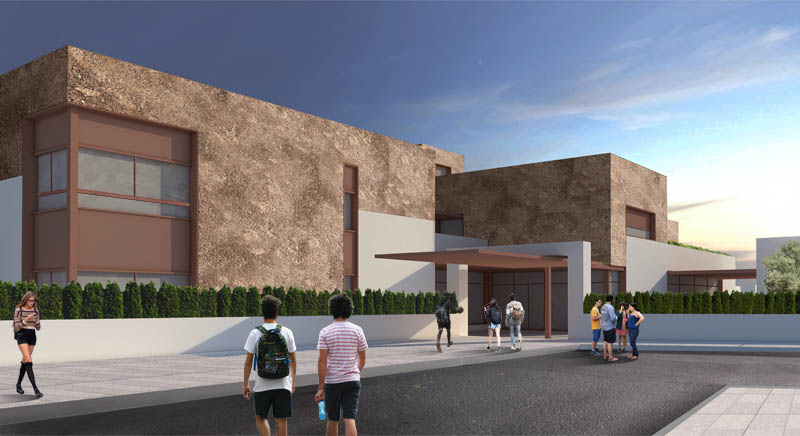

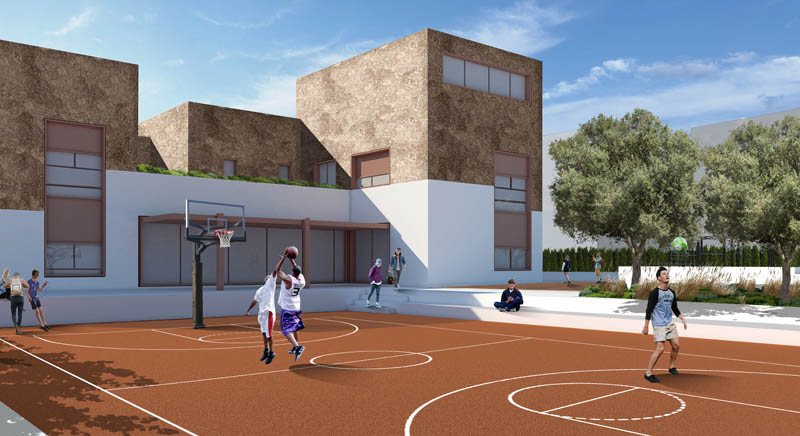

The proposal concerns the design of a new Lyceum building in the extension of the Nea Politeia districtof Evosmos in Thessaloniki with a capacity of 345 students. The basic principle of the design is to create a friendly and familiar space for the studentswith the parallel renegotiation of the structure of the class. The building is two-storey with an addeda basement. As a whole, it is structured as a composition of uneven small overlapping volumes whose movements definestheir interiors while externally defining courtyards on the ground floor and roofs on the floor for educational uses and break. Concerning the facedes, the building has a smooth uneven base on which are attachedrough faced volumes. In the joints of these two the openings are locatedcompleting themonolithic effect.
In addition to 15 teaching rooms, there are 7other workshops, a multipurpose area, a library, a canteen, offices and spacesthat complement the lyceum. The classrooms are designed in a Gamma shapedplan with an antechamber, accommodate mobile and fixed equipment that offers flexibility in the learning process and all have access to outdoor space available for lesson. In the large courtyard there is a basketball court and a space with fixed gym equipment while scattered we find adequate native planting and resting spots. Special attention was also given to the bioclimaticity of the building, which is helped by the atriums, through openings, the adjustable shades and the ends of the staircases that act as windmills. Finally, the most important materials are the cement screed in rough and smooth finishas well as metal in bronze coloring.
Supervisors: Mitroulias Giorgos, Philippitzis Dimitris
Reference Number: 666

